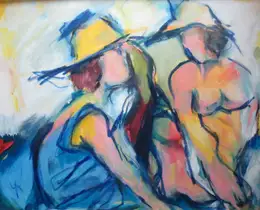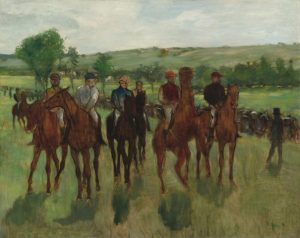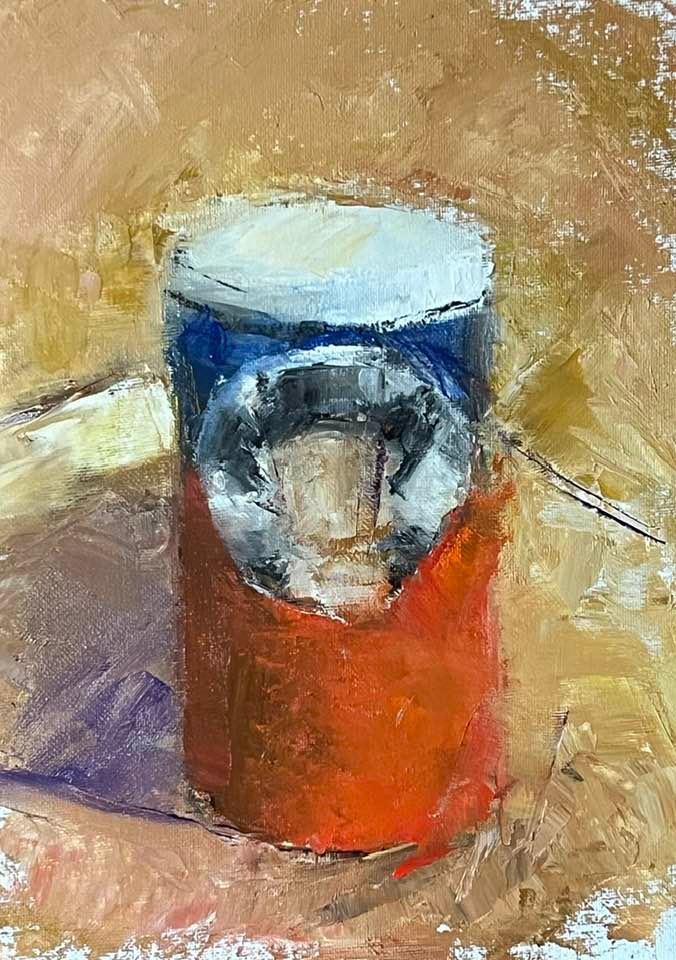02 May Sparing Details
 Yesterday, I visited the studio of Philadelphia painter Laura Acton, all spanking clean for her May Day open house and sporting a fresh coat of gray floor paint.
Yesterday, I visited the studio of Philadelphia painter Laura Acton, all spanking clean for her May Day open house and sporting a fresh coat of gray floor paint.
Laura paints vivid still lifes, landscapes and figures, and she had several years’ paintings hanging on the four walls and sitting on the floor propped against the moldings.
As many painters’ work does, Laura’s work varies in style; but it is all unmistakably Laura’s.

Her spare details, I think, are the reason.
Her veggies have no shadows; her streets, no gutters; her figures, no eyes.
As serendipity would have it, I returned to my own studio right after visiting Laura’s to log onto a weekly online painting class that I’ve been taking since the pandemic began two years ago.
The class topic was sparing details.
Unlike writing, which comes to life only with a heavy impasto of minute detail, painting wants a light touch.
“You need to give the viewer something to do,” the instructor said, using Degas’ works as examples of sparing details.

Including every nook, cranny, wart and blemish of a subject robs the viewer of her willing participation in your work and drives your painting towards photography, the instructor said.
But sparing details lets the viewer step in and assist you, while your painting attempts to “catch” time and light passing.
Degas could do that particularly well.
“A painting is not made to be sniffed,” Rembrandt once told a patron, by which he meant the viewer needed to stand at a distance from it to appreciate the artist’s intention.
You might say the same of the artist’s subject: it’s not made to be sniffed.
It’s made rather to be glimpsed; to be approached in a gesture; to be translated in a flurry; and to be made explicit only by the viewer.
She needs to have something to do.
Above: Two Girls by Laura Acton. Oil and oil pastel on canvas. 24 x 30 inches. The Riders by Edgar Degas. Oil on canvas. 29 x 36 inches. Oatmeal by Robert Francis James. Oil on canvas board. 8 x 10 inches.
